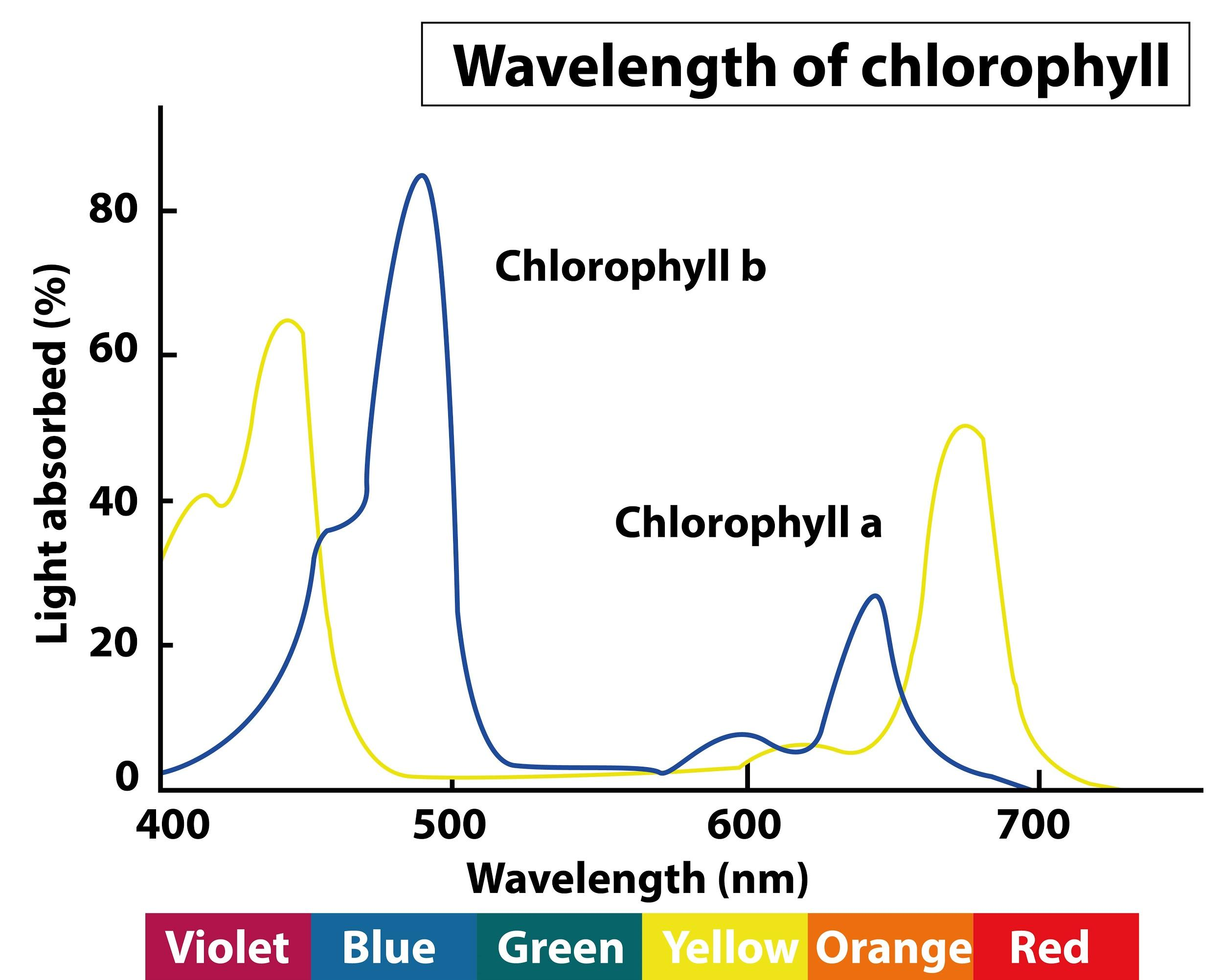
Chlorophylls absorbs visible light of wavelength
(a) 400 - 500 nm only
(b) 300 - 400 nm only
(c) 600 - 800nm only
(d) 400 - 500 nm and 600 - 700 nm
Answer
576.6k+ views
Hint: Chlorophyll absorbs the wavelength of both blue and red regions of VIBGYOR. Plants reflect the green region of the visible light spectrum and thus appear green in color.
Complete Step by Step Answer: The different chlorophyll pigments absorb light at specific wavelengths. The action spectrum of photosynthesis corresponds closely to the absorption spectra of chlorophyll, showing that chlorophyll is the chief pigment associated with photosynthesis. This graph together shows that most of the photosynthesis takes place in the blue and red region of the spectrum which ranges from 400 - 500 nm and 600 - 700 nm respectively. Thus, the maximum photosynthesis occurs in the blue and red regions.

Additional Information: Chromatographic separation of the leaf pigment shows that the color of leaves is due to four pigments: - Chlorophyll a- Bright green in the chromatogram - Chlorophyll b- Yellow-green - Xanthophyll- Yellow - Carotene –Yellow to yellow- orange
Chlorophyll pigments - Chlorophyll has a tadpole- like structure. It consists of a porphyrin head and a phytol tail. Porphyrin head: All chlorophylls have a complex ring structure chemically related to the porphyrin- like group of hemoglobin and cytochromes. Phytol tail: A long hydrocarbon tail is almost always attached to the ring structure. It anchors the chlorophyll to the hydrophobic portions of the thylakoid.
Accessory pigments: They absorb light of different wavelengths and transfer the energy to the chlorophyll molecules; thus, they are also called antenna molecules. Carotenoids protect plants from excessive heat and prevent photo- oxidation of chlorophyll pigments. Thus, they are called “Shield Pigments”.
So, the correct answer is, '(d) 400 - 500 nm and 600 - 700 nm'
Note: - Of all these pigments the primary photosynthetic pigment is chlorophyll a. - All pigments other than chlorophyll are called accessory pigment. - Some photosynthesis does take place at the other wavelengths of the visible spectrum. - In PS- I, the reaction center chlorophyll a has an absorption peak at 700 nm, hence called as ${ P }_{ 700 }$, while in PS- II, the reaction center has an absorption is maximum at 680 nm and is called ${ P }_{ 680}$.
Recently Updated Pages
The number of solutions in x in 02pi for which sqrt class 12 maths CBSE

Write any two methods of preparation of phenol Give class 12 chemistry CBSE

Differentiate between action potential and resting class 12 biology CBSE

Two plane mirrors arranged at right angles to each class 12 physics CBSE

Which of the following molecules is are chiral A I class 12 chemistry CBSE

Name different types of neurons and give one function class 12 biology CBSE

Trending doubts
One Metric ton is equal to kg A 10000 B 1000 C 100 class 11 physics CBSE

What is 1s 2s 2p 3s 3p class 11 chemistry CBSE

Discuss the various forms of bacteria class 11 biology CBSE

State the laws of reflection of light

Explain zero factorial class 11 maths CBSE

An example of chemosynthetic bacteria is A E coli B class 11 biology CBSE




